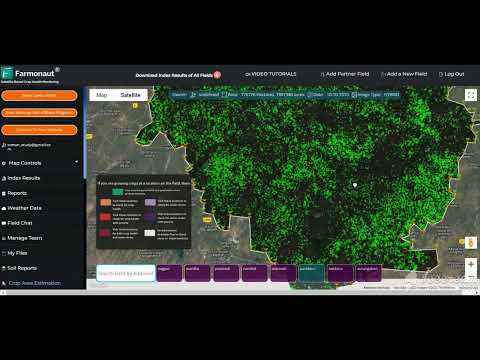US-EU Wine Tariffs: How California’s Industry Navigates Global Trade Challenges
“The proposed 200% tariff on European wine imports could drastically reshape the $70 billion global wine industry.”
In the world of international trade, few industries are as deeply intertwined and culturally significant as the wine industry. Recent developments in US-EU trade relations have sent ripples through the global wine market, with potentially far-reaching consequences for producers, distributors, and consumers alike. As we delve into this complex issue, we’ll explore how California’s wine industry, a cornerstone of US wine production, is navigating these turbulent waters.
The Tariff Proposal: A Seismic Shift in Wine Trade
Last week, President Trump’s announcement of a potential 200% tariff on European wine imports sent shockwaves through the industry. This dramatic proposal has ignited a fierce debate about its potential impacts on both sides of the Atlantic. While some view it as an opportunity for domestic producers, others see it as a threat to the delicate balance of the global wine ecosystem.
As we at Farmonaut closely monitor agricultural trends and their impacts on farmers worldwide, we recognize the significance of this development for the wine industry. Our satellite-based crop monitoring and AI-driven advisory systems provide valuable insights into vineyard health and productivity, which could prove crucial for wineries adapting to these changing market conditions.

California’s Wine Industry: At the Crossroads
California, producing 81% of US wine, stands at the epicenter of this trade dispute. The state’s winemakers and grape growers are viewing the proposal with a mix of cautious optimism and deep concern. On one hand, the tariffs could potentially boost demand for domestic wines. On the other, they threaten to disrupt established distribution networks and global market dynamics.
John Williams, founder of Frog’s Leap winery in Napa Valley, encapsulates the industry’s ambivalence: “Even though we’re a farming family business, there’s a global link. This is not good for our industry in general.” This sentiment underscores the interconnected nature of the modern wine trade, where changes in one region can have cascading effects worldwide.
The Global Ripple Effect
The proposed tariffs would undoubtedly have far-reaching consequences beyond California’s borders. European wine exports, particularly Champagne, could face significant challenges in maintaining their US market share. This could create opportunities for US-made sparkling wines but also risks disrupting long-established trade relationships and consumer preferences.
At Farmonaut, we understand the importance of global agricultural trade. Our API and API Developer Docs provide tools for analyzing crop health and productivity across regions, which could be valuable for wineries and distributors navigating these changing market dynamics.
The Distribution Dilemma
One of the most significant concerns raised by industry experts is the potential impact on wine distributors. These middlemen play a crucial role in the wine supply chain, connecting producers with retailers and restaurants. The proposed tariffs could severely disrupt their business models, potentially leading to consolidation in the industry and changes in how wine reaches consumers.
Williams points out, “We all rely on the same distributors. The health of those businesses is important to wineries all over the world.” This interconnectedness highlights the need for a holistic approach to understanding and addressing the challenges posed by the tariffs.
Declining Demand: A Pre-existing Challenge
The tariff dispute comes at a time when the wine industry is already grappling with declining demand. A recent report from Silicon Valley Bank estimates that total wine category sales will see negative volume growth of between -3% and -1% in 2024. This trend is attributed to changing consumer preferences, particularly among younger generations who are consuming less alcohol than their predecessors.
For California’s wine industry, this decline in demand has been particularly challenging for smaller, family-owned wineries and farms. These businesses often lack the resources and scale to weather market fluctuations as easily as larger corporations.
The Big Players: Advantage or Concern?
John Duarte, a former Republican Congressman who runs a family farm and grape vine nursery, raises an interesting point about the potential unintended consequences of the tariffs. He suggests that larger alcohol corporations that both import and export wine might actually benefit from the tariffs due to customs refund policies.
Duarte explains, “This 200% tariff on top of other excise and tariffs that are in place already is a giant advantage to the global wine companies that do importing and exporting from the United States.” This perspective highlights the complex interplay between trade policies and market dynamics, where well-intentioned measures can sometimes have unexpected outcomes.

The Sparkling Wine Opportunity
While many in the industry view the tariffs with apprehension, some see potential opportunities, particularly in the sparkling wine sector. Bruce Lundquist, co-founder of Rack & Riddle, the largest sparkling wine producer in the United States, is cautiously optimistic about the potential boost to domestic sparkling wine production.
With France shipping nearly 27 million bottles of Champagne to the US in 2023, a 200% tariff could significantly alter this market. Lundquist notes, “It would probably boost business for domestically made sparkling wines.” This shift could lead to increased investment and innovation in US sparkling wine production, potentially reshaping consumer preferences over time.
At Farmonaut, we recognize the importance of adapting to changing market conditions. Our AI-powered Jeevn advisory system can provide valuable insights for vineyard management, helping producers optimize their operations in response to market shifts.
Environmental Challenges: Compounding the Complexity
Adding to the industry’s challenges are the environmental factors that have been impacting California’s wine production in recent years. Wildfires and droughts have caused significant crop destruction and yield reductions, further straining an already stressed industry.
These environmental challenges underscore the need for advanced agricultural technologies to mitigate risks and optimize production. Farmonaut’s satellite-based crop health monitoring and AI-driven advisory systems can play a crucial role in helping vineyards adapt to these changing conditions, providing real-time data on soil moisture, vegetation health, and other critical metrics.
The Consumer Perspective
While much of the discussion around the tariffs focuses on producers and distributors, it’s crucial to consider the impact on consumers. The proposed tariffs would almost certainly lead to higher prices for European wines in the US market, potentially altering consumer behavior and preferences.
This price increase could drive some consumers towards domestic wines, but it may also lead to overall reduced wine consumption or shifts towards other alcoholic beverages. Understanding these potential changes in consumer behavior will be crucial for wineries and retailers as they navigate the new market landscape.
Global Trade Dynamics: Beyond Wine
The wine tariff dispute is just one facet of broader trade tensions between the US and EU. The US has already imposed a 25% tariff on all steel and aluminum imports, including those from the EU. In response, the EU has announced countermeasures, including a 50% tariff on American whiskey, set to roll out in April.
These tit-for-tat measures highlight the interconnected nature of global trade and the potential for disputes in one sector to spill over into others. For the wine industry, this broader context adds another layer of uncertainty and complexity to an already challenging situation.
Adapting to Change: Strategies for Survival and Growth
As California’s wine industry faces these multifaceted challenges, adaptation will be key to survival and growth. Some potential strategies include:
- Diversification: Wineries may need to diversify their product offerings, potentially exploring new varietals or wine styles that align with changing consumer preferences.
- Technology Adoption: Embracing advanced agricultural technologies, like those offered by Farmonaut, can help vineyards optimize their operations and mitigate environmental risks.
- Market Expansion: With potential disruptions in traditional export markets, California wineries may need to explore new international markets for their products.
- Direct-to-Consumer Sales: Strengthening direct-to-consumer channels could help wineries maintain profitability in the face of distribution challenges.
- Sustainability Initiatives: Focusing on sustainable and environmentally friendly practices could appeal to environmentally conscious consumers and help mitigate the impacts of climate change.
As we at Farmonaut continue to innovate in the agricultural technology space, we’re committed to providing tools and insights that can help the wine industry navigate these challenges. Our Android App and iOS App offer on-the-go access to critical farm management tools, which could be invaluable for vineyard managers adapting to rapidly changing conditions.
The Road Ahead: Uncertainty and Opportunity
As the wine industry grapples with the potential impacts of the proposed tariffs, one thing is clear: the road ahead is paved with both uncertainty and opportunity. While the challenges are significant, they also present a chance for innovation, adaptation, and potentially, a reshaping of the global wine landscape.
For California’s wine industry, success in this new environment will require a delicate balance of preserving tradition while embracing change. It will demand a willingness to explore new technologies, markets, and business models. And perhaps most importantly, it will require a continued commitment to producing high-quality wines that resonate with consumers, regardless of the economic and political headwinds.
Comparative Analysis of US-EU Wine Trade Impact
| Factors | Impact on California Wine Industry | Impact on European Wine Exports | Estimated Change (%) |
|---|---|---|---|
| Domestic Wine Sales | Potential increase due to reduced competition | N/A | +10% to +20% |
| European Wine Import Volume | N/A | Significant decrease expected | -40% to -60% |
| US Sparkling Wine Production | Likely increase to fill market gap | N/A | +15% to +30% |
| EU Wine Export Revenue | N/A | Substantial decrease in US market | -30% to -50% |
| Consumer Price Index for Wine | Moderate increase | Significant increase for European wines | +5% to +10% (US), +150% to +200% (EU) |
| Market Share of California Wines | Potential increase in domestic market | N/A | +5% to +15% |
| Employment in California Wineries | Possible increase due to expanded production | N/A | +3% to +8% |
“California, producing 81% of US wine, faces both challenges and opportunities amid the US-EU wine tariff dispute.”
Conclusion: Navigating Uncharted Waters
The proposed 200% tariff on European wine imports represents a significant challenge for the global wine industry, with particularly complex implications for California’s wine producers. While the potential for increased domestic market share offers a silver lining, the disruption to established trade patterns and the risk of retaliatory measures create a landscape of uncertainty.
As the industry navigates these uncharted waters, adaptability and innovation will be key. Technologies like those offered by Farmonaut can play a crucial role in helping vineyards optimize their operations and respond to changing market conditions. Our satellite-based crop monitoring and AI-driven advisory systems provide valuable tools for vineyard management in these uncertain times.
Ultimately, the resilience of California’s wine industry, coupled with its rich tradition of quality and innovation, positions it to weather this storm. As the situation evolves, we at Farmonaut will continue to support the agricultural community with cutting-edge technology and data-driven insights, helping to ensure that the future of wine remains bright, regardless of the challenges ahead.
FAQ Section
- Q: How will the proposed 200% tariff affect wine prices for US consumers?
A: The tariff is likely to significantly increase prices for European wines in the US market. Domestic wines may see moderate price increases due to potentially higher demand. - Q: Will California wineries benefit from these tariffs?
A: While some California wineries may see increased domestic demand, the overall impact is complex. Disruptions to global trade and distribution networks could pose challenges. - Q: How might these tariffs affect the sparkling wine market?
A: US sparkling wine producers could see increased demand as European Champagne becomes more expensive. This might lead to growth in domestic sparkling wine production. - Q: What are the potential long-term effects on the global wine industry?
A: Long-term effects could include shifts in consumer preferences, changes in global market shares, and potential restructuring of international wine trade relationships. - Q: How can wineries adapt to these changing market conditions?
A: Wineries can adapt by diversifying product offerings, embracing technology for optimization, exploring new markets, strengthening direct-to-consumer sales, and focusing on sustainability.
Earn With Farmonaut: Affiliate Program
Earn 20% recurring commission with Farmonaut’s affiliate program by sharing your promo code and helping farmers save 10%. Onboard 10 Elite farmers monthly to earn a minimum of $148,000 annually—start now and grow your income!
Farmonaut Subscriptions
As we continue to monitor the evolving situation in the wine industry, Farmonaut remains committed to providing cutting-edge agricultural technology solutions. Our tools can help vineyards optimize their operations, manage resources efficiently, and adapt to changing market conditions. Whether you’re a small family-owned winery or a large-scale producer, our platform offers valuable insights to navigate these challenging times.







